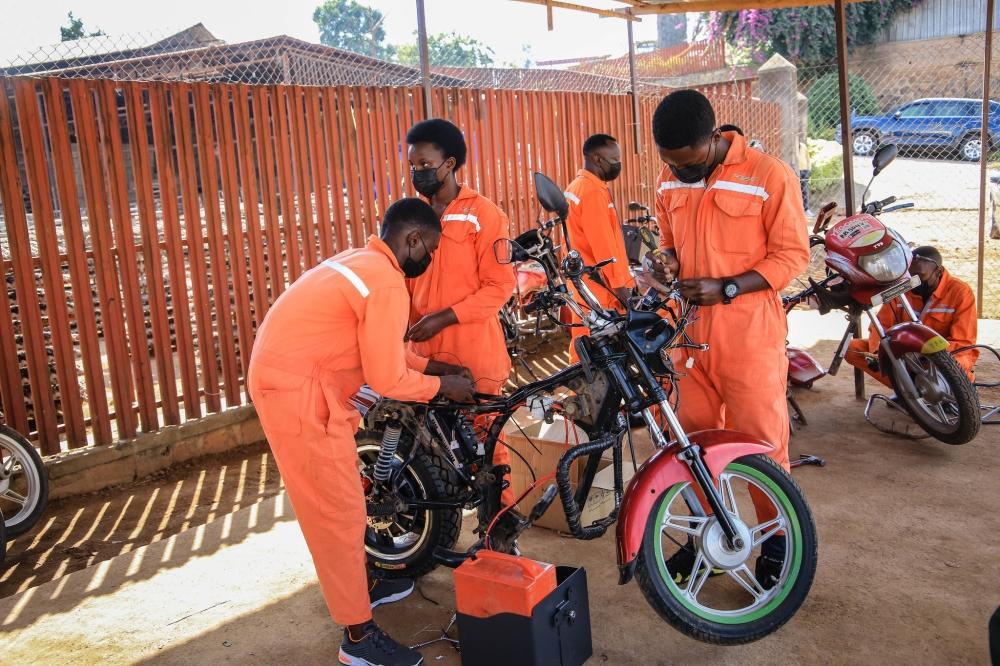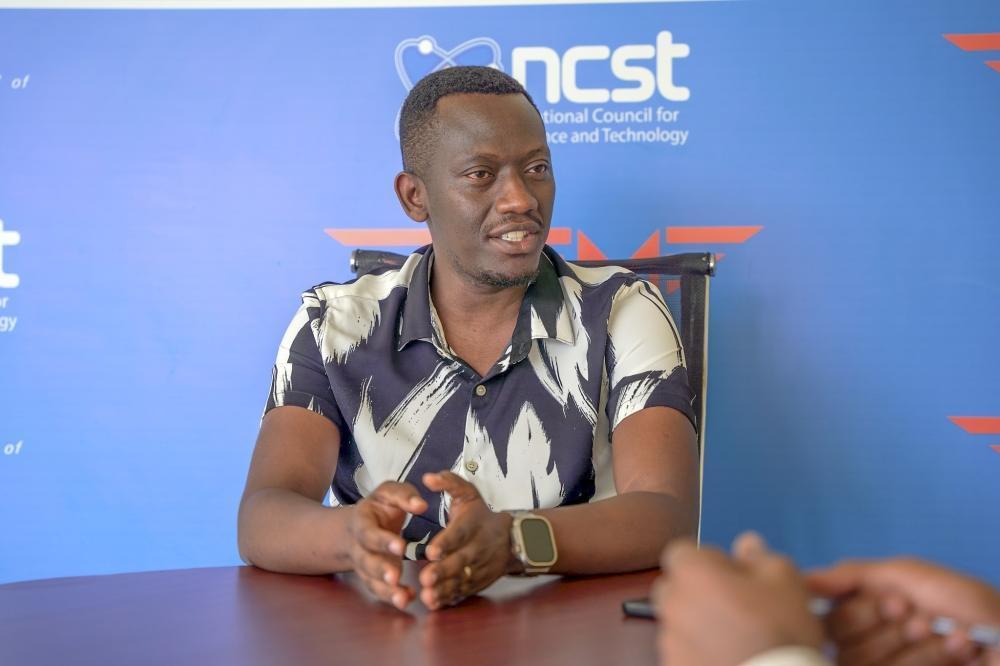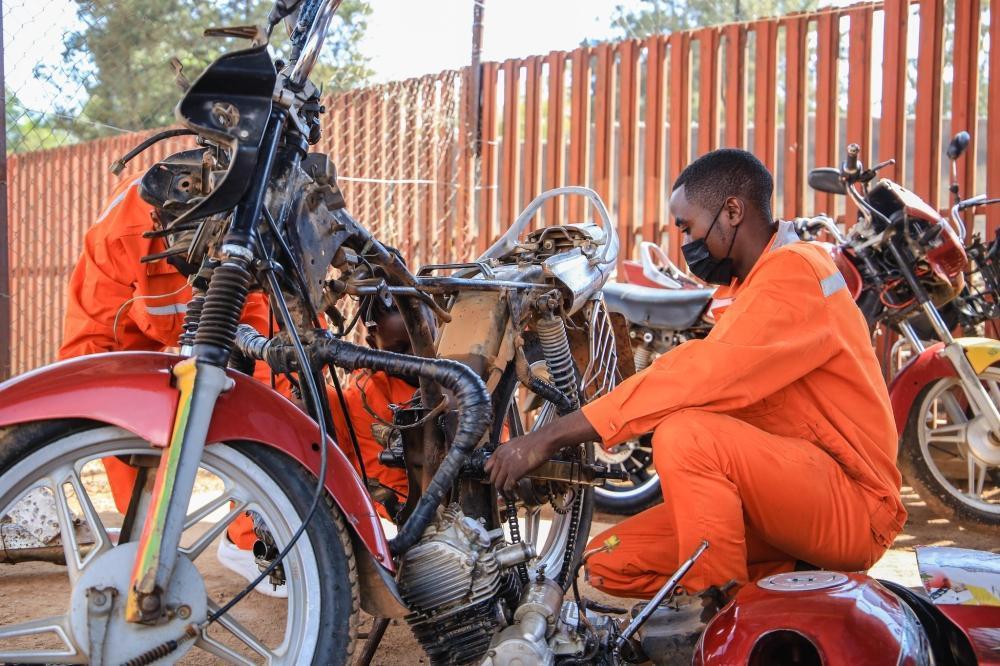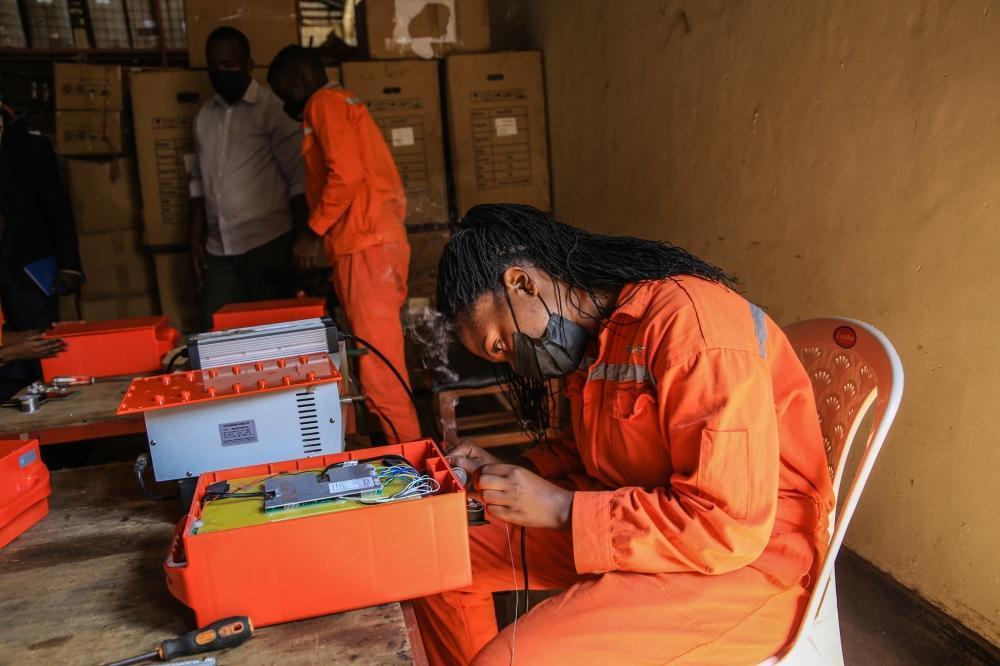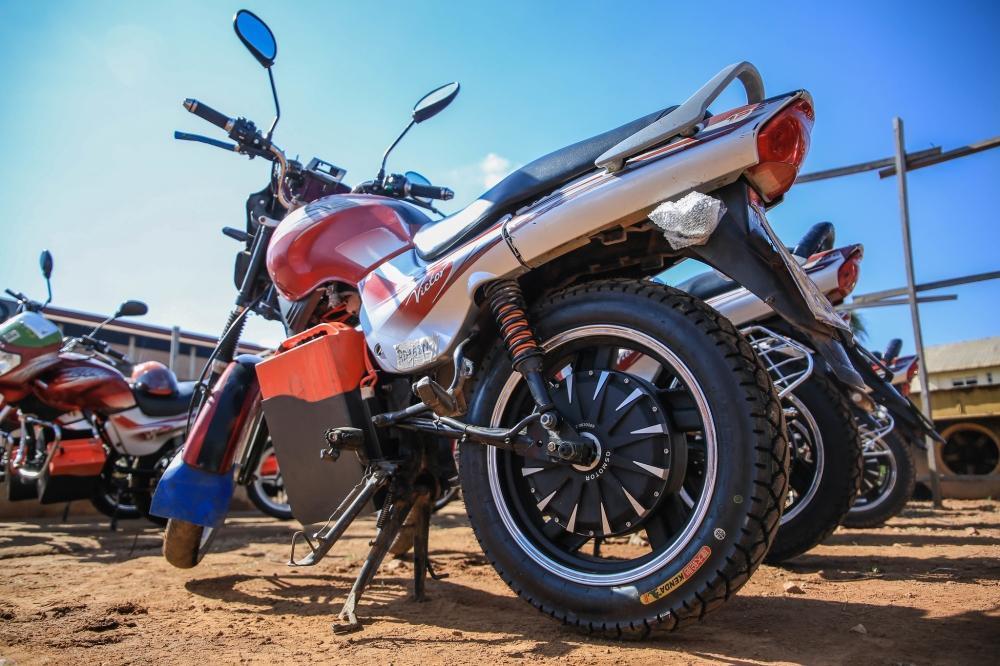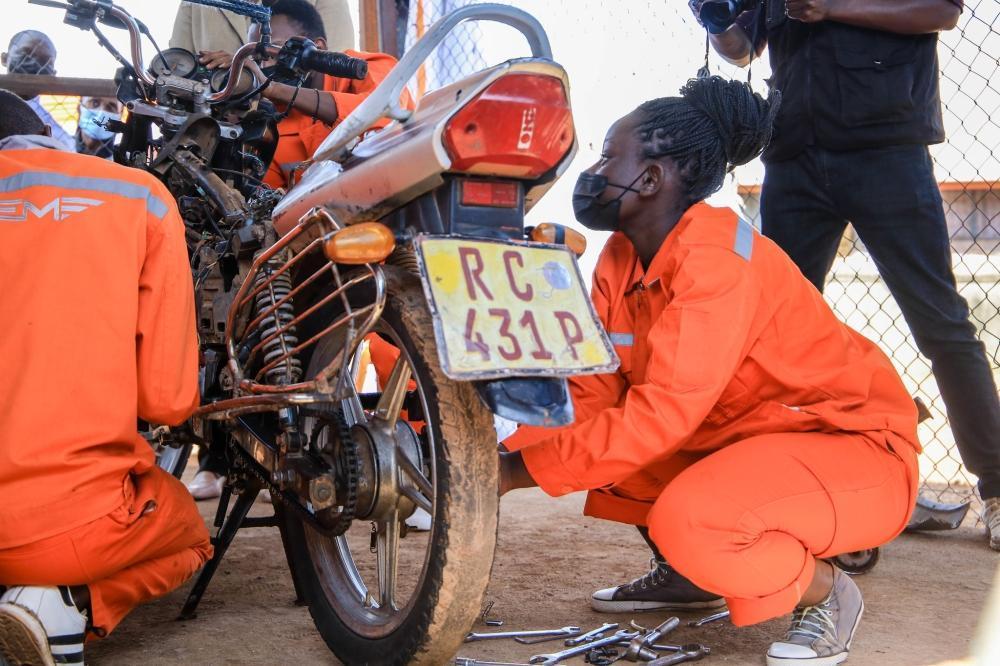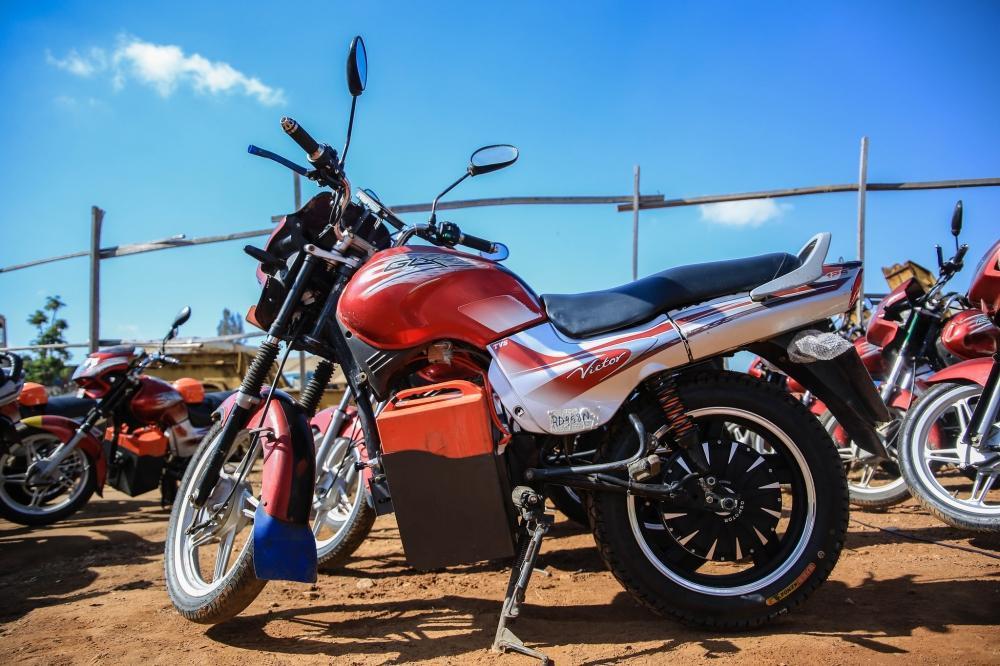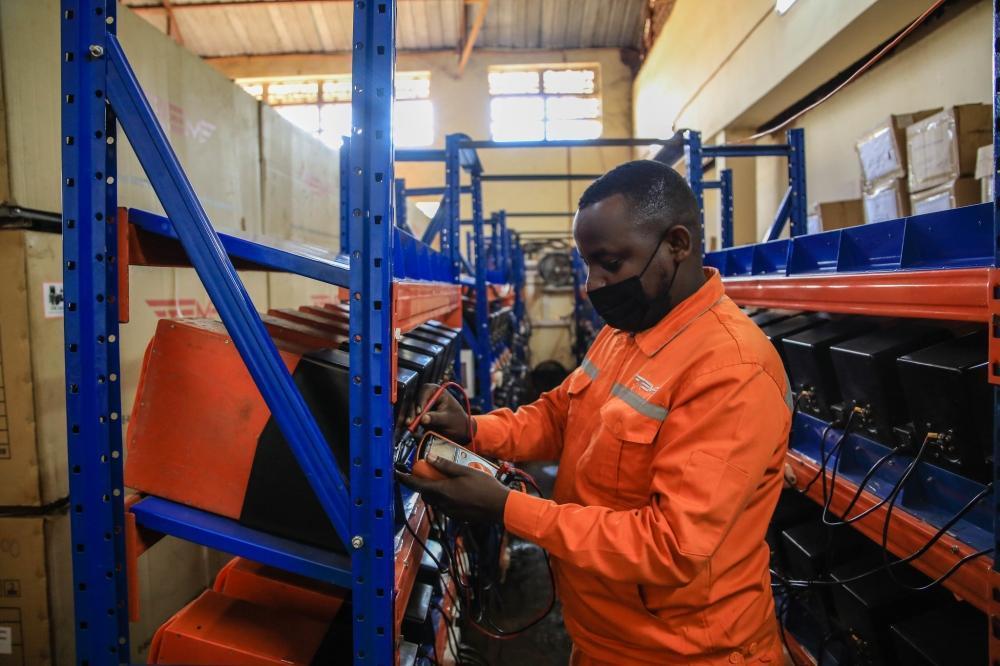Africa-Press – Rwanda. Rwanda’s project to convert fuel-powered motorcycles into electric vehicles (EVs) is currently facing challenges including high retrofitting costs and limited charging infrastructure, despite initial progress, The New Times has learned.
Launched in 2021 with a pilot phase led by the Rwanda Environment Management Authority (REMA), the project converted 80 motorcycles in Gasabo, Kicukiro, and Nyarugenge districts from fuel engines to electric.
During the pilot, retrofitting was done free of charge, though the cost per motorcycle was estimated at Rwf700,000. Since then, rising foreign exchange rates and import expenses for spare parts have pushed the cost up to between Rwf800,000 and Rwf1 million, officials say.
Prince Bonfils, Finance and Administration Manager at Rwanda Electrical Mobility (REM) speaks during an interview. Photo by Titus Manzi
Prince Bonfils, Finance and Administration Manager at Rwanda Electrical Mobility (REM), a company that was implementing the pilot phase, told The New Times that interest from motorcycle owners has been evident, with around 3,000 having registered for retrofitting since 2021.
However, he noted that besides the costs, another challenge is that the vehicle owners claim that e-charging stations are not enough in various parts of the country.
“Some riders say they can travel from Kigali to Rusizi with a fuel-powered bike. Saying that with an EV, it would be difficult because of the shortage of charging stations. Expanding infrastructure will be the answer,” he said.
After the pilot “we had to wait and see their feasibility and durability,” Bonfils explained.
“Four years have passed without any major problems. The converted bikes are still operating well, in fact, even better than before, as they were essentially given new life.”
According to him, the retrofitted motorcycles were fitted with new engines and basic spare parts, making them comparable to new electric motorcycles, except for cosmetic differences such as body covers.
The project targeted motorcycles that were at least three years old, with around 95 per cent being five years old and more.
During the pilot project, motorcycle owners were given back their replaced fuel engines, which they could sell or reuse. But moving forward, REM plans to partner with scrap dealers to handle them responsibly.
“This will ensure that retrofitting contributes to environmental protection, by preventing old engines from returning to circulation while empowering EVs,” Bonfils explained.
Between September and October this year, REM plans to expand the project, with 40 students from TVET schools having already been trained in retrofitting, with plans to work with IPRCs to train more technicians to meet the growing demand, Bonfils told The New Times.
How retrofitting works
Maximilien Mutuyeyezu, Chief Technician at REM, explained the process of retrofitting a motorcycle.
Maximilien Mutuyeyezu, Chief Technician at REM.
Step 1: Documentation
Ownership, insurance, tax and other documents are verified to ensure the motorcycle belongs to the applicant.
Step 2: Inspection
Reusable parts like chassis are checked for damage, and owners may be advised to replace worn-out components.
Step 3: Replacement
The fuel engine and related parts are removed and replaced with electric ones, while the lights are switched to LEDs to save energy.
Step 4: Testing
The motorcycle is road-tested to check electricity consumption, climbing ability, and overall performance.
“The whole process does not take more than a day,” Mutuyeyezu said. “An owner can bring the motorcycle at 8am and collect it by 4pm, although this may vary depending on the company’s capacity and demand.”
Estache Niyonambaje, who has been riding commercially in Kigali since 2018, said he first considered switching to an electric motorcycle after being advised by colleagues.
“During the pilot, I benefited when my three-year-old bike was converted free of charge,” he recalled.
“I brought it in one day and by the next day it had been converted and was functioning well. I was given back my old engine and sold it to garages for around Rwf70,000.”
He noted that EVs consume less and cut down on maintenance costs, including expenses on engine oil and the rising price of fuel. With a fully charged battery, he said, his bike can travel up to 50 kilometres.
Since it carries two batteries, he can cover as much as 100 kilometres, with each battery costing around Rwf1,200 to charge. In comparison, covering 50 kilometres on a fuel-powered bike requires about 1.5 litres of petrol, costing roughly Rwf2,700.
“After seeing the potential of EVs, I bought another retrofitted bike, so now I have two,” Niyonambaje said. However, he added that ageing batteries remain a problem, as some no longer store power effectively.
“Sometimes I go to charging stations and collect what is supposed to be a fully charged battery, but it lasts less than 10 kilometres,” he complained.
“There is a need to address challenges with ageing batteries, which are no longer reliable. The shortage of charging stations and durable batteries is another issue.”
Rwanda’s project to convert fuel-powered motorcycles into electric vehicles (EVs) is currently facing challenges including high retrofitting costs.
For More News And Analysis About Rwanda Follow Africa-Press

